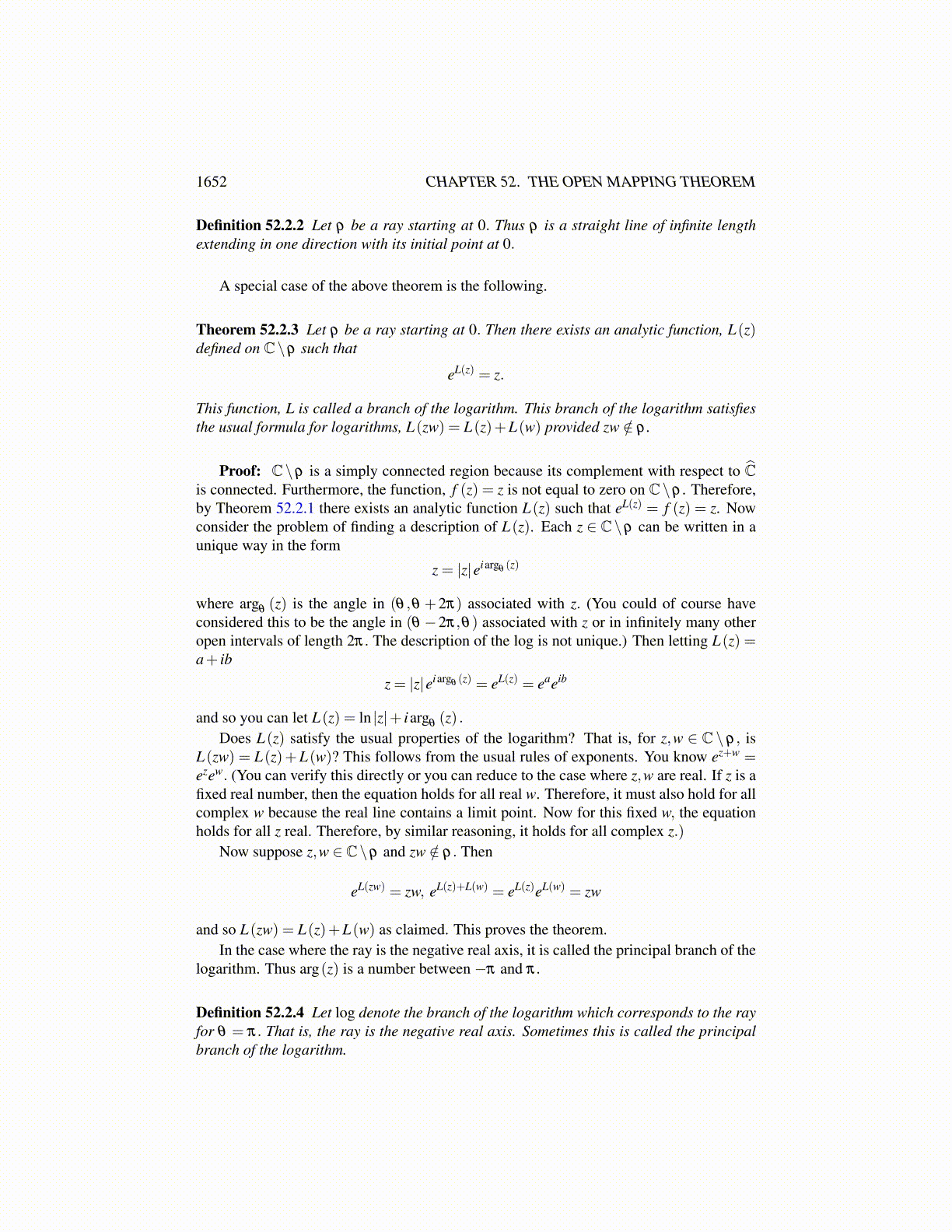
1652 CHAPTER 52. THE OPEN MAPPING THEOREM
Shrinking r if necessary you can assume φ′ (z) ̸= 0 on B(z0,r). Is there an open set V
contained in B(z0,r) such that φ maps V onto B(0,δ ) for some δ > 0?Let φ (z) = u(x,y)+ iv(x,y) where z = x+ iy. Consider the mapping(
xy
)→(
u(x,y)v(x,y)
)where u,v are C1 because φ is given to be analytic. The Jacobian of this map at (x,y) ∈B(z0,r) is ∣∣∣∣ ux (x,y) uy (x,y)
vx (x,y) vy (x,y)
∣∣∣∣= ∣∣∣∣ ux (x,y) −vx (x,y)vx (x,y) ux (x,y)
∣∣∣∣= ux (x,y)
2 + vx (x,y)2 =
∣∣φ ′ (z)∣∣2 ̸= 0.
This follows from a use of the Cauchy Riemann equations. Also(u(x0,y0)v(x0,y0)
)=
(00
)Therefore, by the inverse function theorem there exists an open set, V, containing z0 andδ > 0 such that (u,v)T maps V one to one onto B(0,δ ) . Thus φ is one to one onto B(0,δ )as claimed. Applying the same argument to other points, z of V and using the fact thatφ′ (z) ̸= 0 at these points, it follows φ maps open sets to open sets. In other words, φ
−1 iscontinuous.
It also follows that φm maps V onto B(0,δ m) . Therefore, the formula 52.1.1 implies
that f maps the open set, V, containing z0 to an open set. This shows f (Ω) is an openset because z0 was arbitrary. It is connected because f is continuous and Ω is connected.Thus f (Ω) is a region. It remains to verify that φ
−1 is analytic on B(0,δ ) . Since φ−1 is
continuous,
limφ(z1)→φ(z)
φ−1 (φ (z1))−φ
−1 (φ (z))φ (z1)−φ (z)
= limz1→z
z1− zφ (z1)−φ (z)
=1
φ′ (z)
.
Therefore, φ−1 is analytic as claimed.
It only remains to verify the assertion about the case where f is one to one. If m > 1,then e
2πim ̸= 1 and so for z1 ∈V,
e2πim φ (z1) ̸= φ (z1) . (52.1.2)
But e2πim φ (z1)∈ B(0,δ ) and so there exists z2 ̸= z1(since φ is one to one) such that φ (z2) =
e2πim φ (z1) . But then
φ (z2)m =
(e
2πim φ (z1)
)m= φ (z1)
m
implying f (z2) = f (z1) contradicting the assumption that f is one to one. Thus m = 1and f ′ (z) = φ
′ (z) ̸= 0 on V. Since f maps open sets to open sets, it follows that f−1 is